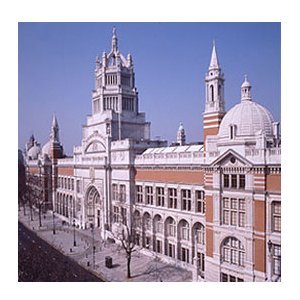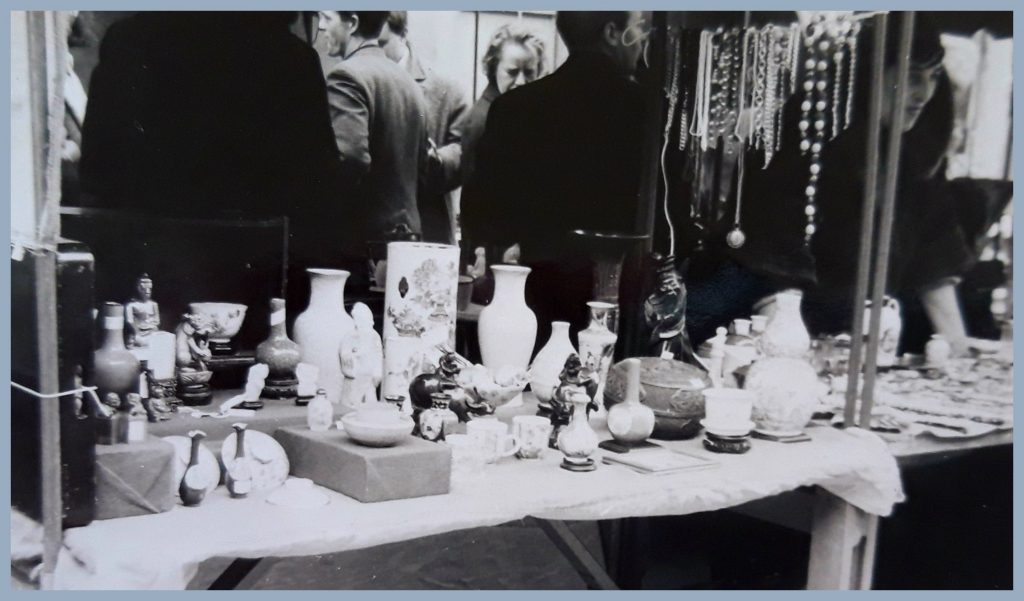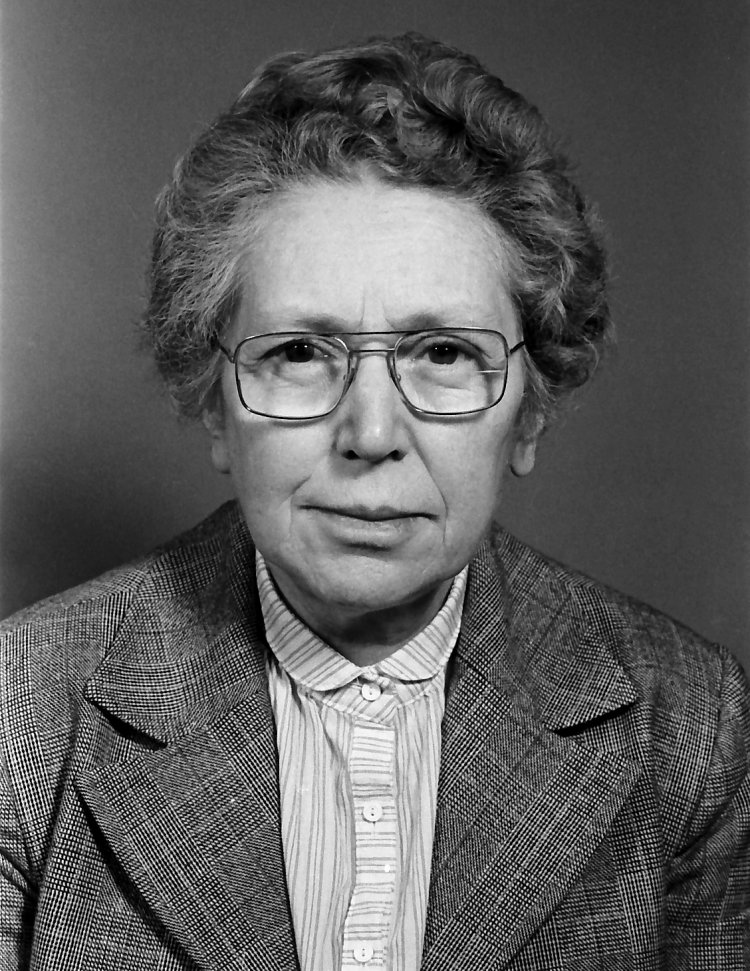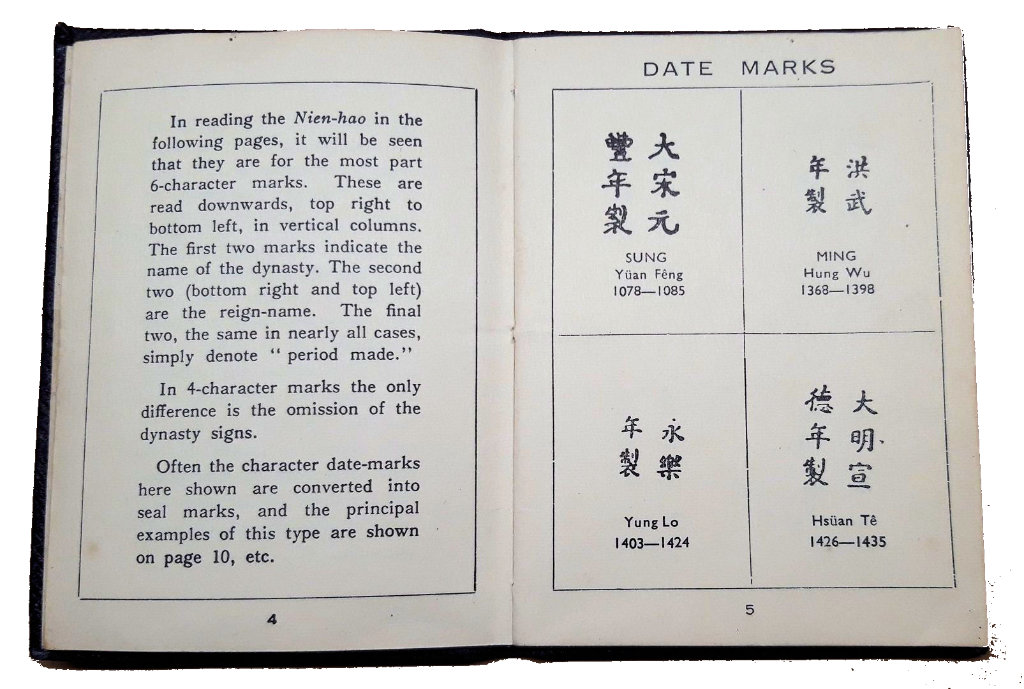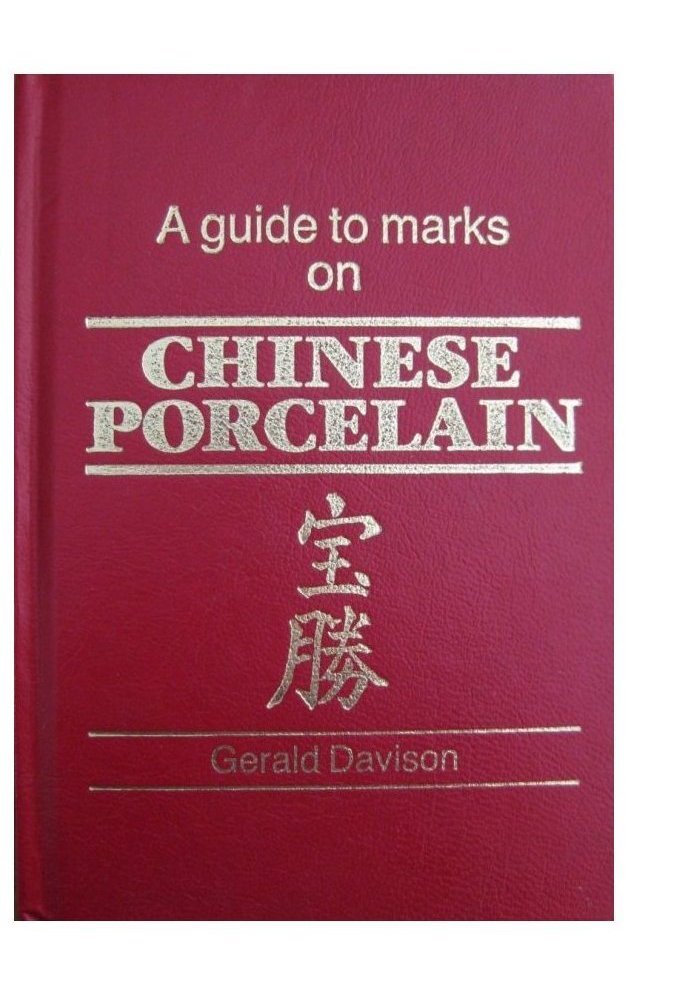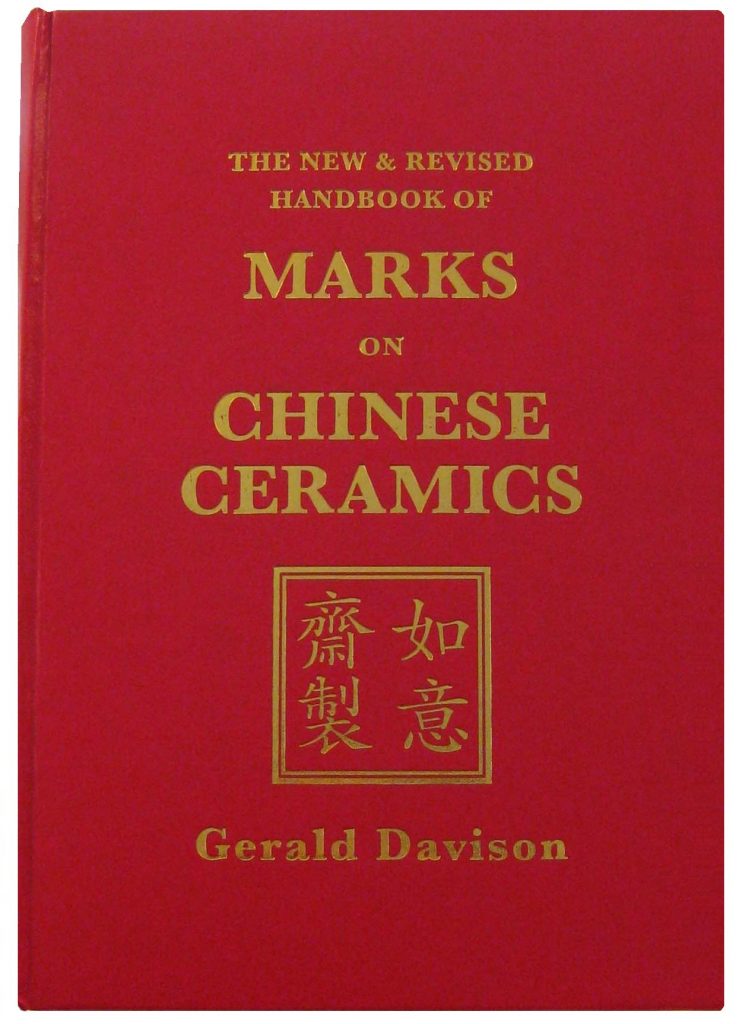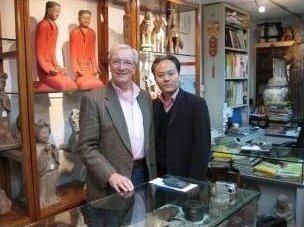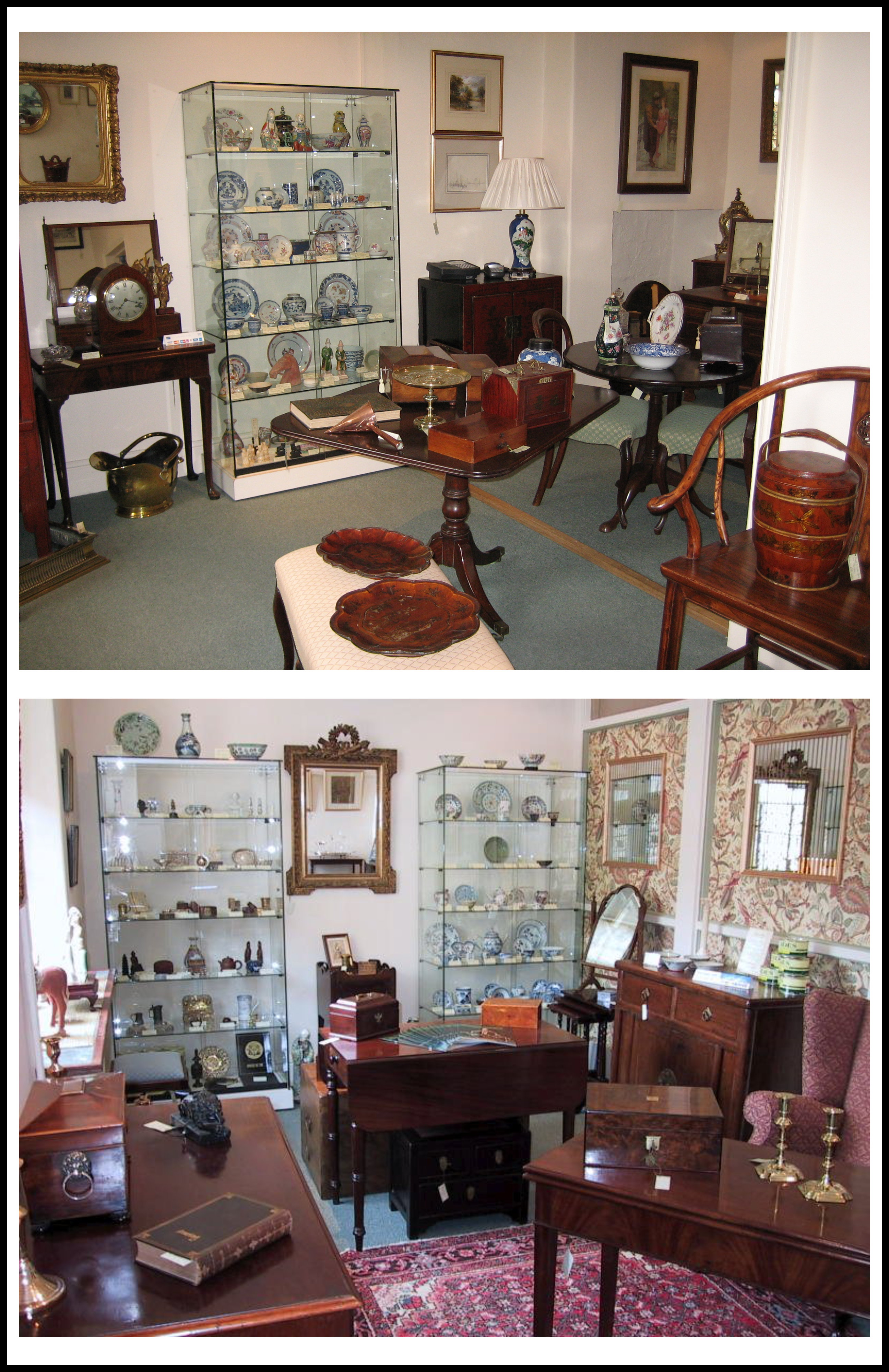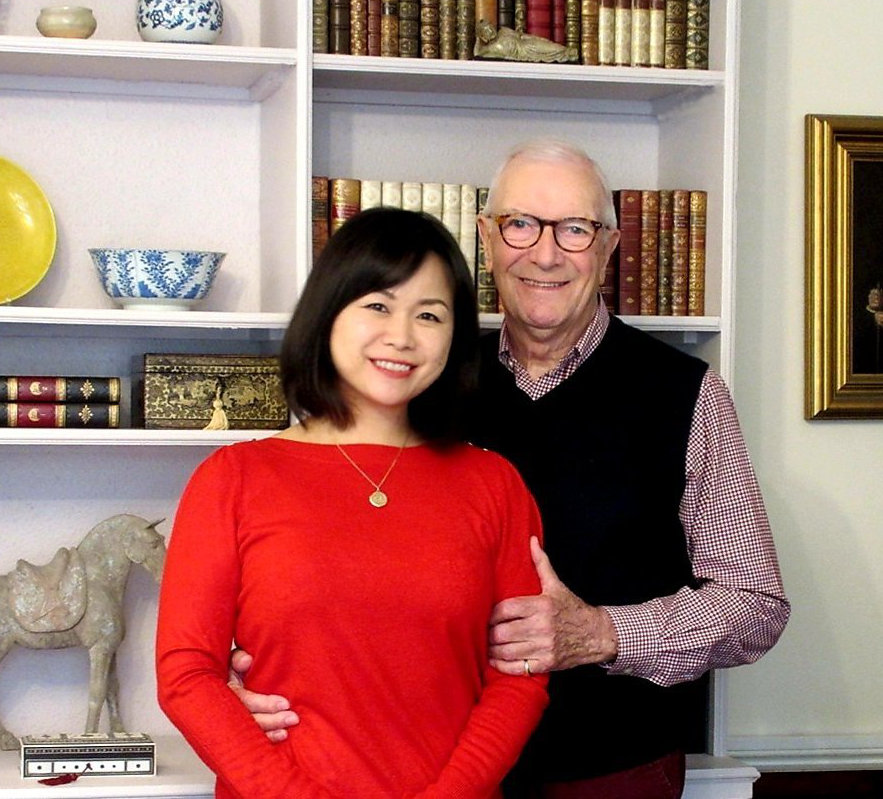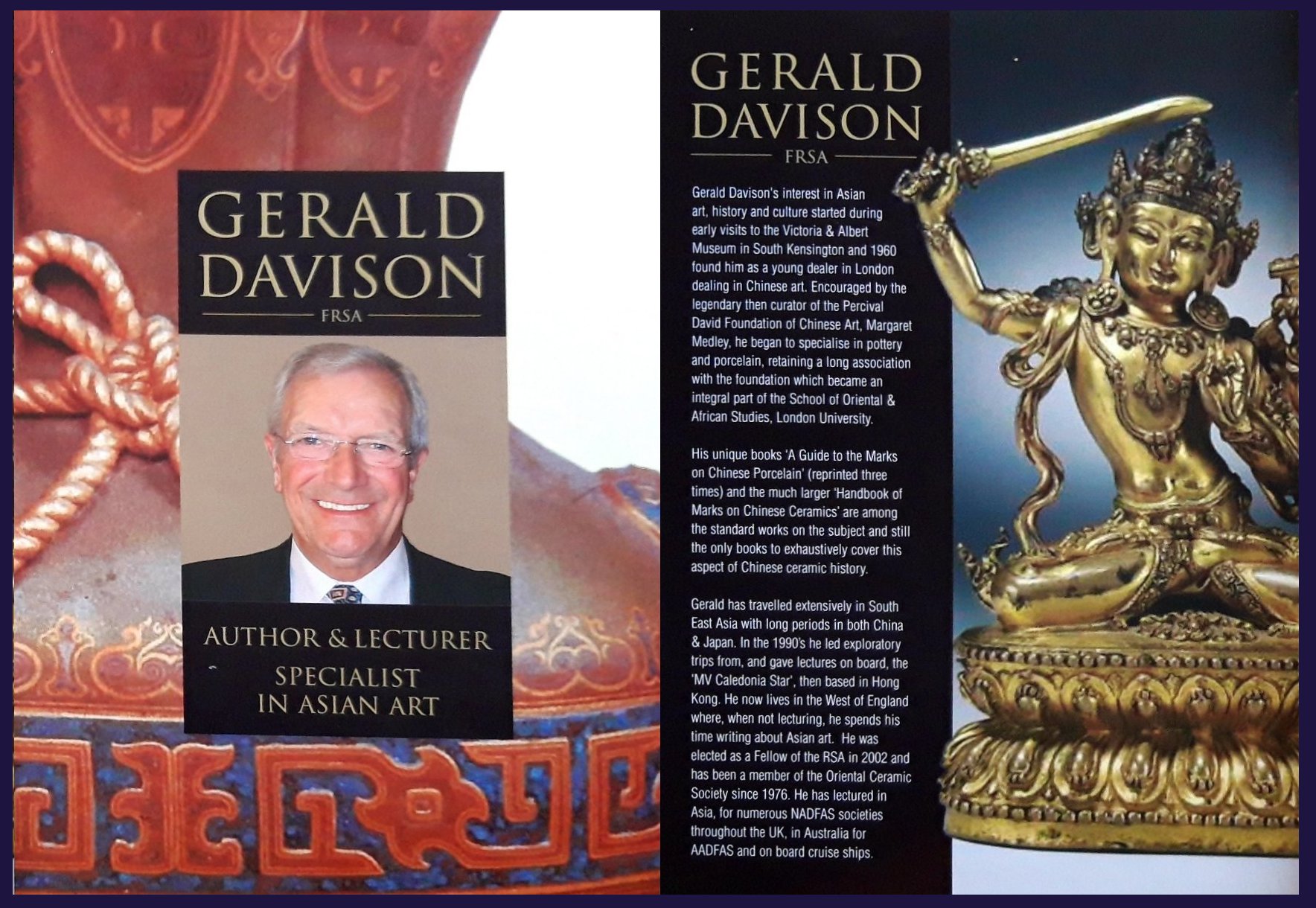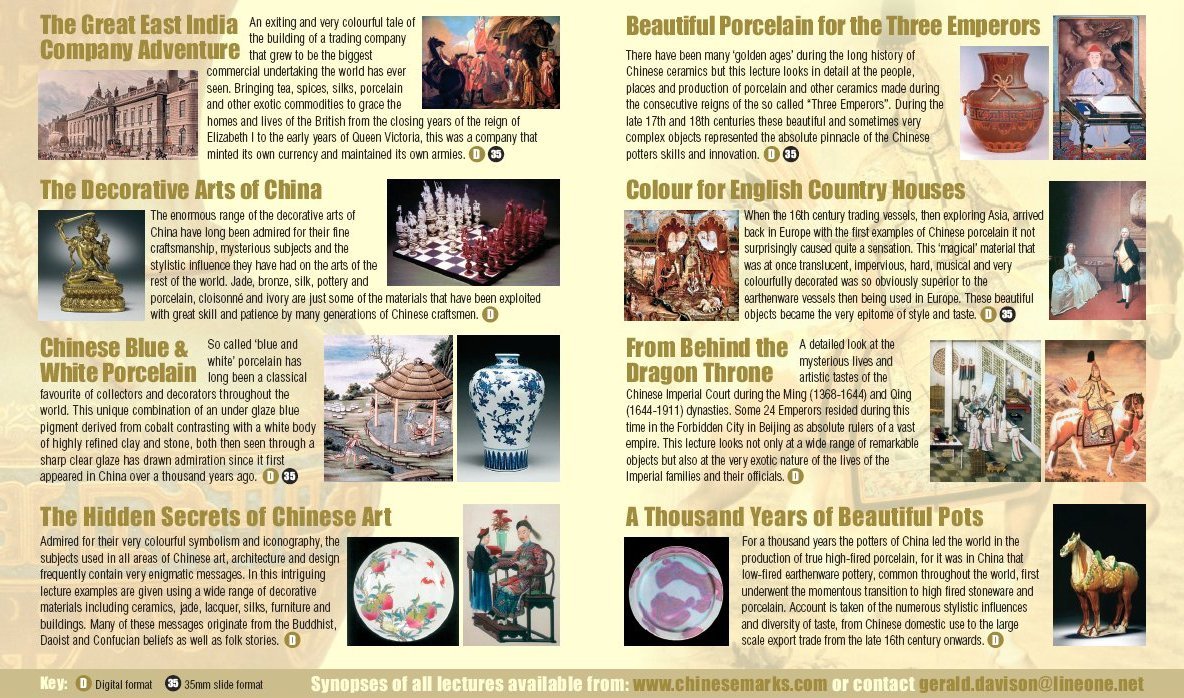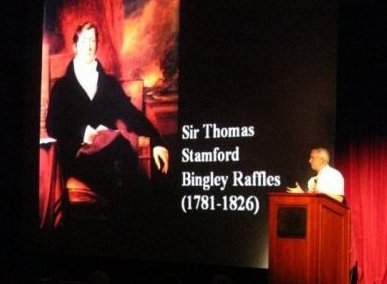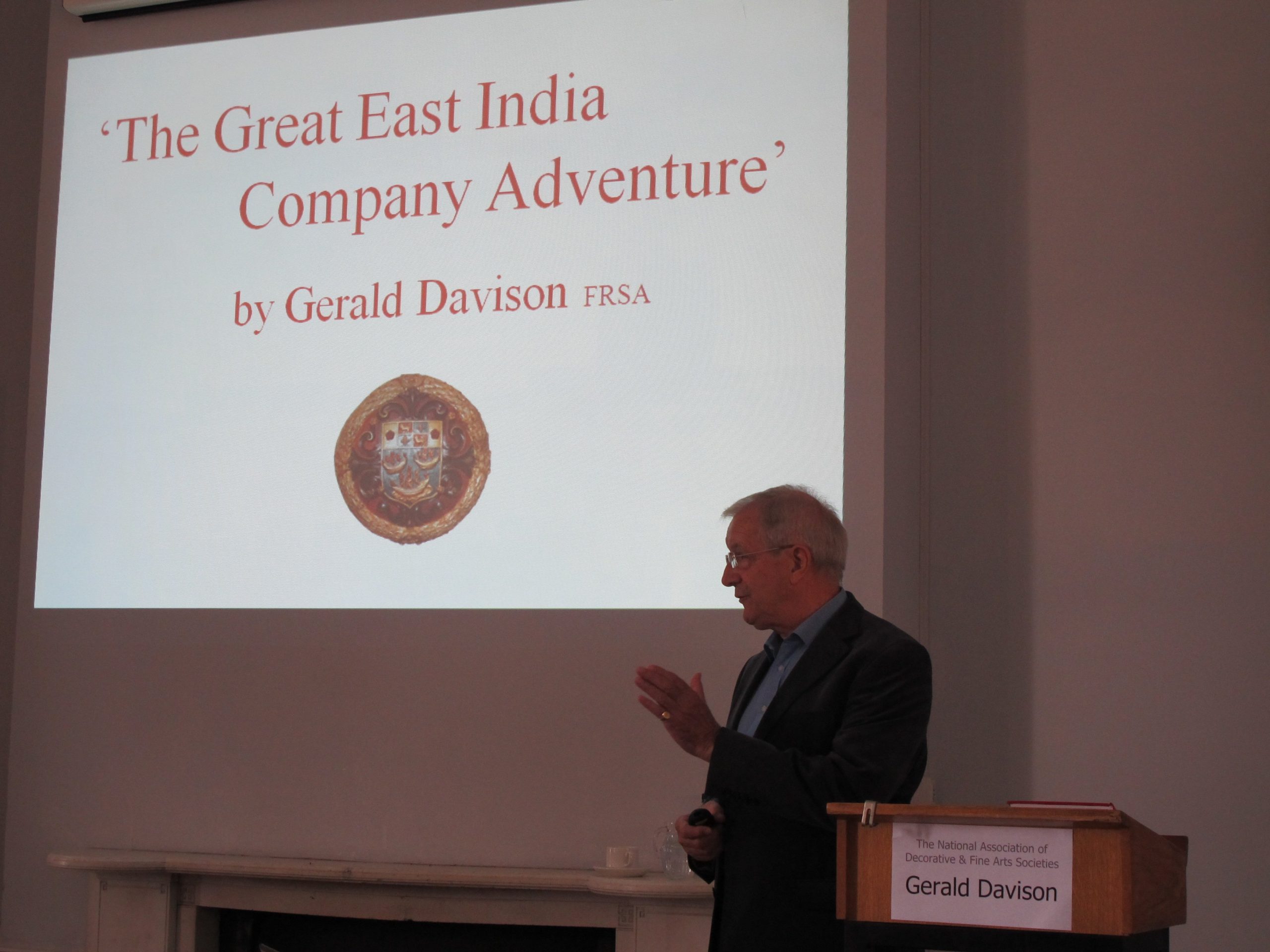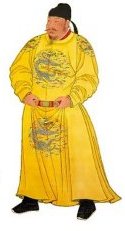Asian Art Dealer
A native of London, Gerald Davison was born in 1943. His early fascination with Asian art and culture was as a result of growing up close to that part of London that houses many of the city’s finest museums. As a boy, wandering around these free museums on wet Saturdays with frequent visits to the Victoria & Albert Museum, the Science Museum opposite and the nearby Commonwealth Institute, gave him a dual passion and intellectual curiosity for all forms of the decorative arts of Asia as well as all things mechanical (see Engineer).
Interestingly, when the Victoria & Albert Museum was originally founded in 1852 as the ‘Museum of Manufactures’, science was then seen as just another branch of the arts. Located originally at Marlborough House, it became the ‘South Kensington Museum’ when it moved to its present site in the Brompton Road in 1857, finally acquiring its current name the ‘Victoria and Albert Museum’ in 1899. It was not until 1909 that the independent Science Museum in Exhibition Road was developed, separating the concept of science and engineering as an art form.
The serried ranks of exhibits in the engineering gallery of the latter fuelled what became Gerald’s life-long interest in vehicle technology and all things mechanical while across the road in the V & A he was in thrall to the renaissance art of Italy and the intense mystery of Chinese and Japanese mythology, culture and above all the decorative arts of both countries. These two parallel interests eventually shaped his diverse business career from the international automotive industry to dealing in, collecting, lecturing and writing about Asian art and more specifically Chinese ceramics.
While training to be an engineer in the late 1950s he showed early entrepreneurial flair by dealing in antiques through the medium of the ‘Exchange and Mart’ weekly magazine. In pre-internet times this was the accepted way in the UK to buy and sell almost anything. Finding that he could do this successfully led to him having a sales pitch in the now famous Portobello Road market and later both the Bermondsey Antique market and Camden Passage – all then at the centre of the London antique trade.
Dealing mainly in the decorative arts of China with a little from Japan and India, these items ranged from ceramics of all types to carved jade, ivory and wood, bronzes and paintings. Quickly realising this was too broad a range for him to acquire sufficient expertise he made the decision to specialise in his first love – Chinese ceramics. At the same time he was fortunate to be helped and encouraged by the legendary, late Margaret Medley, then curator of the Percival David Foundation of Chinese Art (PDF) which formed part of The School of Oriental and African Studies (SOAS) at the University of London. The regular encounters he had with her taught him so much that was good about this wonderful subject. He retained a long and close relationship with the foundation until its demise in 2007. Its superb, world-class collection of Chinese ceramics are now housed to great effect in a new purpose made gallery at the British Museum.
From the outset Gerald found the marks that appeared on some Chinese antique ceramic objects, as well as the stylistic nature of their traditionally drawn characters, fascinating. Apart from the widely documented small number of imperial reign marks, little interest was shown at that time in the meaning of these diverse marks and their purpose. In any case many of the individual characters were quite obscure or no longer in common use. Many dealers and collectors seemed content to handle or own objects with markings but without necessarily having a clear understanding of their meaning. Most publications on Chinese art available then devoted very little space, if any, to the question of marks and usually included only a small selection of the better known ‘hall’ marks and the more common imperial reign marks.
The only exceptions to this were the sections in Stephen Bushell’s wonderful work, ‘Oriental Ceramic Art’ (1896) and to a lesser extent, R L Hobson’s ‘Chinese Pottery & Porcelain’ (1915), W B Honey’s ‘Chinese Porcelain’ (1927) and later, P J Donnelly’s ‘Blanc de Chine’ published in 1969. Even Margaret Medley, in her own books had repeatedly highlighted the need for research and publication into this particular aspect of Chinese ceramic history.
Gerald had acquired at the outset a very small book published for free distribution with the ‘Antique Collector’ magazine that had been originally produced to coincide with the great Chinese Art Exhibition in January 1936. That exhibition, held at the Royal Academy, Burlington House, London contributed so much to the understanding of Chinese art and brought together most of the leading collectors of the day. This little, simple but now rare book measuring only 10 cm by 7 cm and covered in faux leather contained most of the Ming and Qing dynasty imperial reign marks mainly in kaishu script but a few in the zhuanshu form. It also had a few illustrations of auspicious symbols used as marks and a list of the major dynasties and reign periods. One of his prized possessions, he carried it everywhere for some years until he realised he had memorised those and quite a few more.
Author
Realising then that a small but important vacuum existed, Gerald gradually began to collect and research information on these marks from many sources. By the late 1980s, while running a publishing business, he felt he had enough material to produce a small format, hard-bound guide to help dealers and collectors identify some of the more unusual marks. This book sold out very quickly and was followed by 3 further reprinted editions selling a final total of 8,000 copies.
The success of this first book encouraged Gerald to focus even more effort into collecting examples of marks from museums and collectors worldwide. In turn this led to the publication in 1994 of the much larger ‘Handbook of Marks on Chinese Ceramics’, covering as it did over 1800 different marks in both kaishu and zhuanshu script.
A further 15 years research then led to the ‘The New and Revised Handbook of Marks on Chinese Ceramics’ first released in 2010 and detailing some 3400 marks in both forms of script. Sold out very quickly this was reprinted with a supplement in 2013. Over the years these unique books have became one of the standard works on the subject of Chinese ceramics and are still the only publications to exhaustively cover this aspect of their history.
Gerald has been travelling widely in Asia since 1970, for many years as a director of a major international Japanese company, with long periods of time spent in Japan, China and the Philippines. In the early 1990’s he also lectured aboard the adventure vessel, MV Caledonian Star which was then based in Hong Kong and Nanjing, China. As well as lecturing about China’s rich culture, history and art he led pioneering land trips of the Chinese mainland.
Lecturer
Retiring from corporate life in 1998 (see Businessman) he returned to his passion of dealing in antiques with a gallery near his home in Somerset. This meant spending time each year in China purchasing early works of art mainly from tombs of the Han dynasty (206 BCE-220 CE) through to the Song dynasty (960-1279 CE). Gerald was a member of the Oriental Ceramic Society (OCS), London from 1973 and in 2002 he was elected as a Fellow of the Royal Society for the Arts (RSA).
In 2004 he also became an elite lecturer for The Arts Society (formerly the National Association of Decorative & Fine Arts Societies or NADFAS). 2005 then saw him complete an extensive, six week lecture tour of Eastern and Southern Australia for their sister organisation, AADFAS. Apart from lecturing to societies and universities all over the United Kingdom he lectured between 2010 and 2016 in China, Thailand, Vietnam, Hong Kong, Japan, Philippines, Malaysia, Borneo, Brunei, South Korea and Taiwan. Gerald also lectured as a guest lecturer at ‘Art in Action’ in Oxford an event that each year attracts almost 30,000 people over 4 days.
His wide range of lectures on the history, culture and decorative arts of Asia have covered topics from the empire-building English East India Company and its cargoes, to the exquisite porcelain objects made for the Imperial family in China and those made for export to Europe and North America. Having given some 300 lectures over a decade, health issues finally brought lecturing to an end in 2017.
Gerald and his Japanese wife Yuriko now live on the picturesque Isle of Wight off the south coast of the UK where he still deals in small works of Asian art. His new 2021 publication ‘Marks on Chinese Ceramics’ detailing 4200 marks over 400 pages brings to a conclusion his long interest in this rather opaque and often intriguing aspect of Chinese art.

